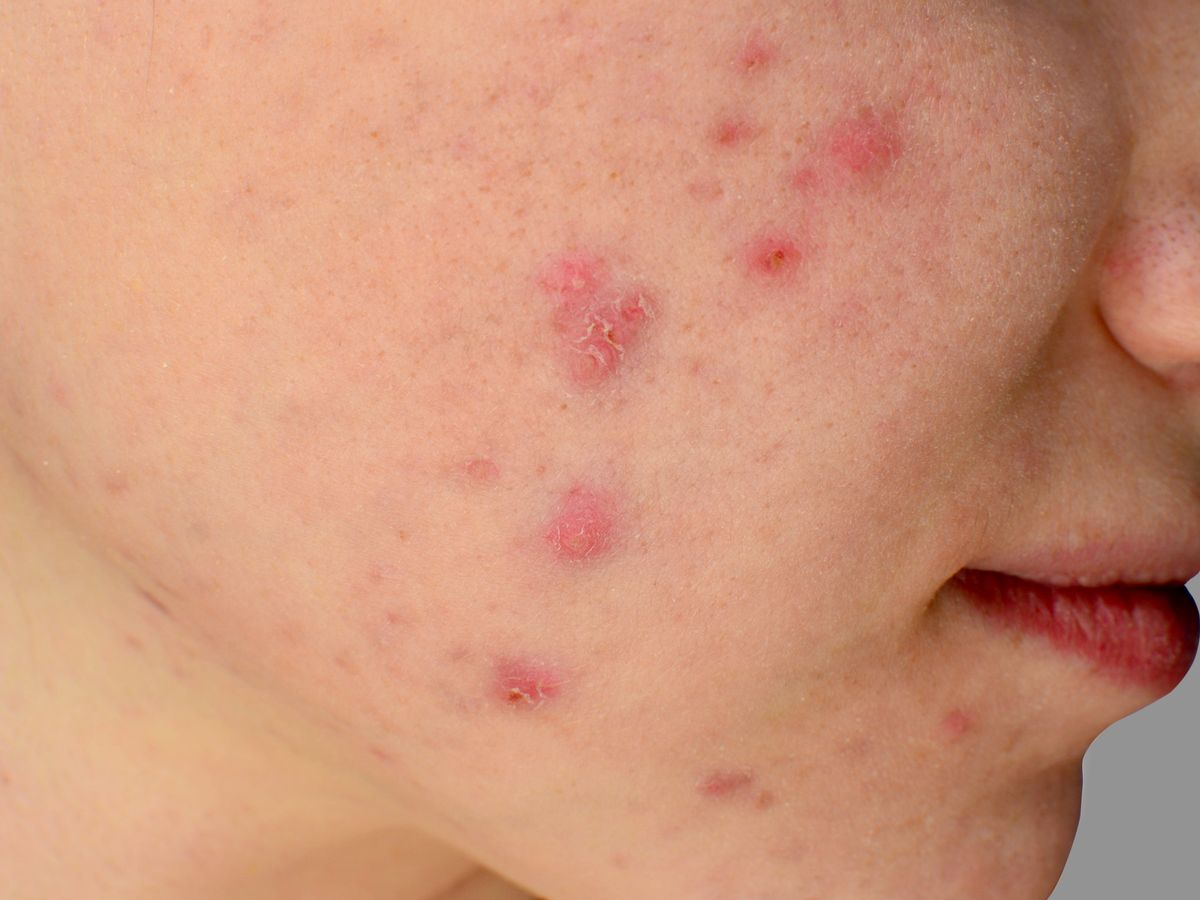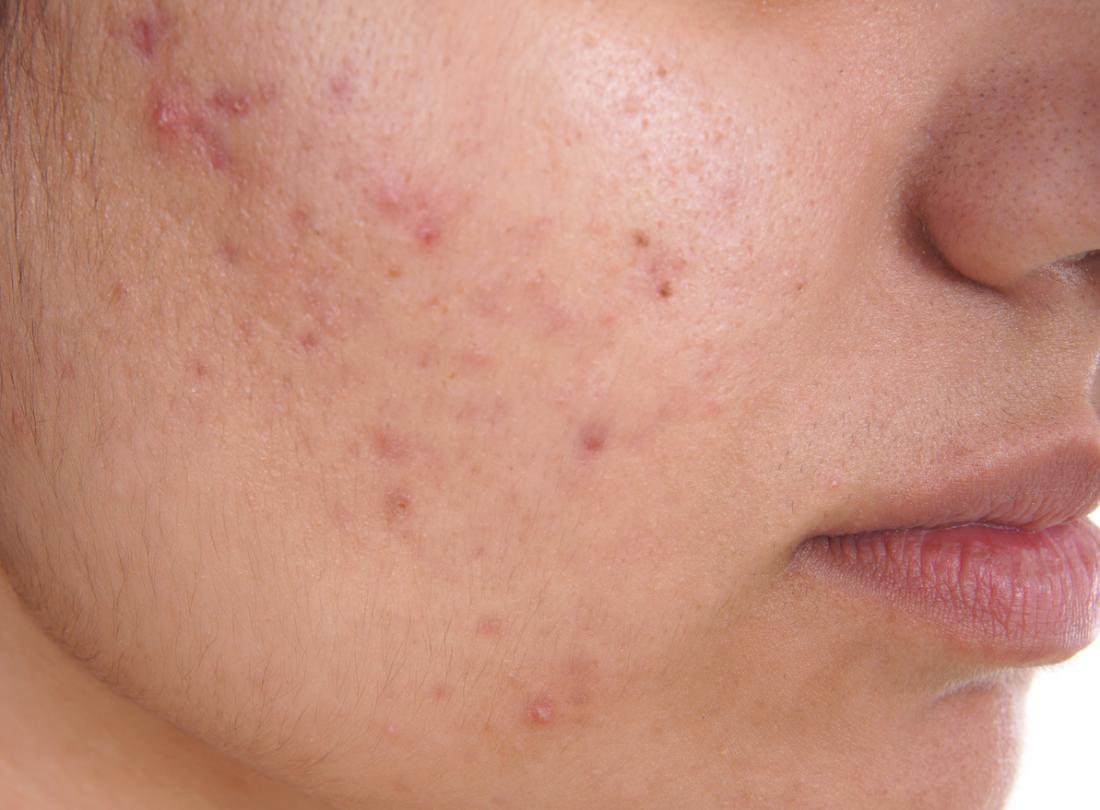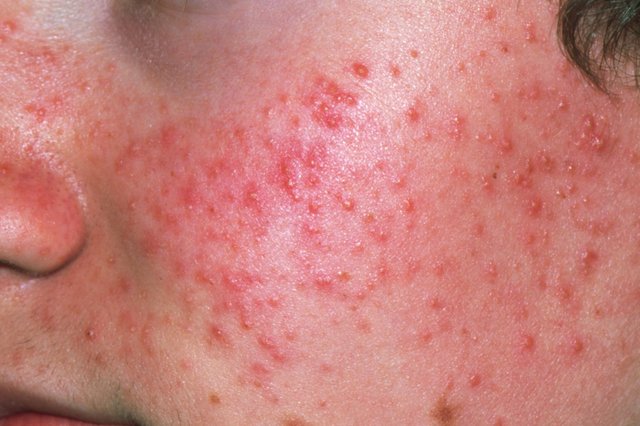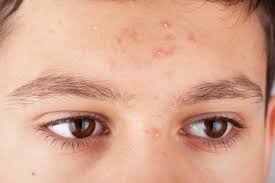
Hormones. Common acne in teenagers starts with an increase in hormone production. During puberty, both boys and girls produce high levels of androgens, the male s6x hormones that include testosterone. Testosterone signals the body to make more sebum, the oil produced in the skin' s oil glands.

Bacteria. Excess sebum clogs the openings to hair follicles- - especially those on the face, neck, chest, and back. Bacteria grow in these clogged follicles. This makes blackheads or whiteheads, also known as ' ' comedones, ' ' form on the skin' s surface. Sometimes, this clogging causes the follicle wall to break under the pressure of this buildup.

When this happens, sebum leaks into nearby tissues and forms a pustule or a papule- - this is called inflammatory acne. Larger, tender pustules are called nodules. Depending on the type of pill, oral contraceptives may trigger acne in some women but suppress it in others. Some injectable contraceptives and intrauterine birth control devices (IUD) may also cause acne. Steroids taken by some bodybuilders and other athletes can also lead to severe outbreaks.

Acne has many subtypes. Acne neonatorum and acne infantum occasionally affect newborns and infants, usually boys. A pimply rash appears on the face and usually clears within weeks with no lasting effect. However, acne infantum may last longer, be more severe, and cause scarring. People who escaped their teen years almost pimple- free may develop persistent adult- onset acne as they get older. Despite the normal increase in androgen levels during puberty, some doctors believe that flare- ups of acne have less to do with androgen levels than with how a person' s skin responds to an increase in sebum production or to the bacteria that causes acne.

The bacteria Propionibacterium acnes occurs naturally in healthy hair follicles. If too many of them accumulate in plugged follicles, they may secrete enzymes that break down sebum and cause inflammation. Some people are simply more sensitive than others to this reaction. Sebum levels that might cause a pimple or two in one person may result in widespread outbreaks- - or even acute cystic acne- - in another person.


